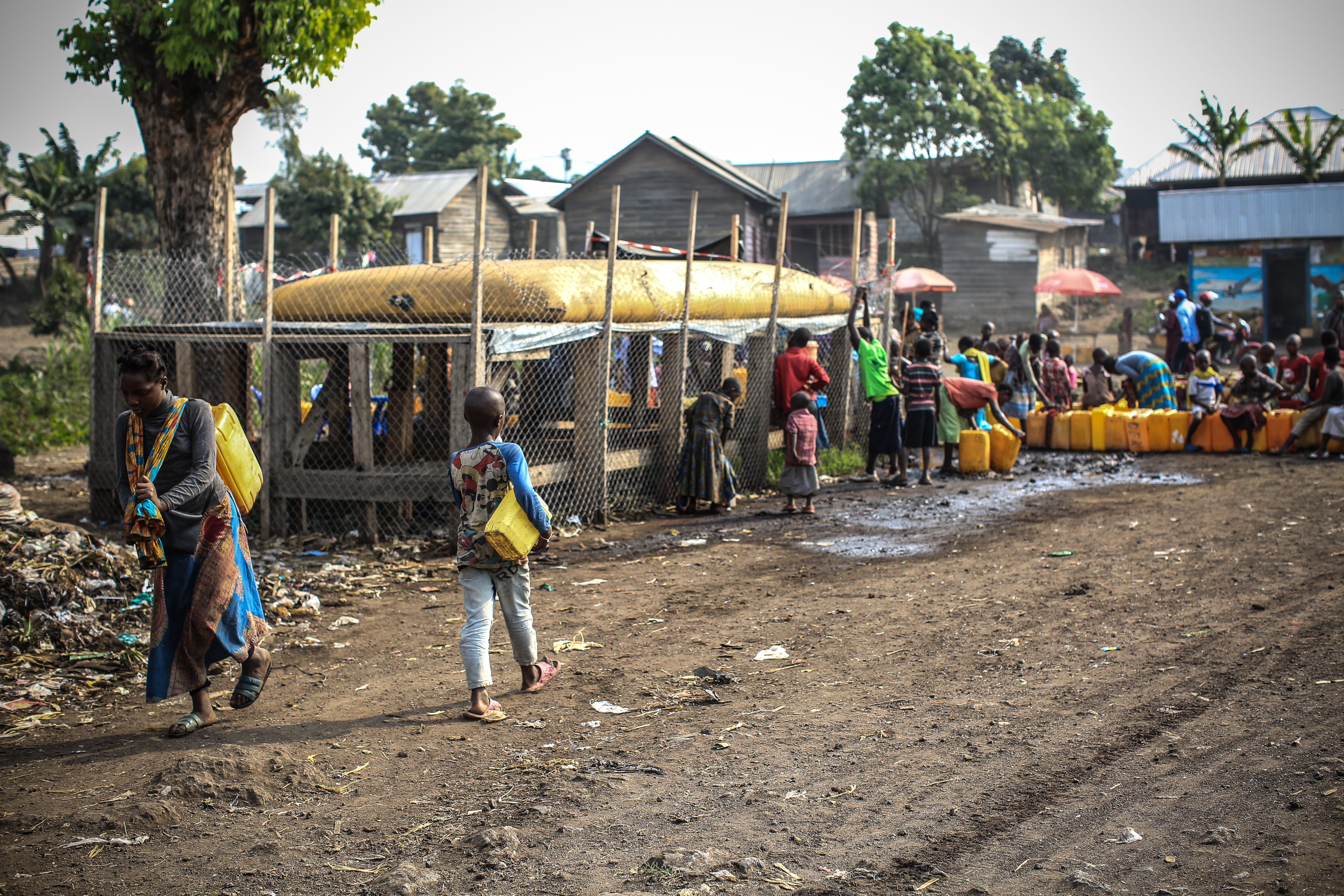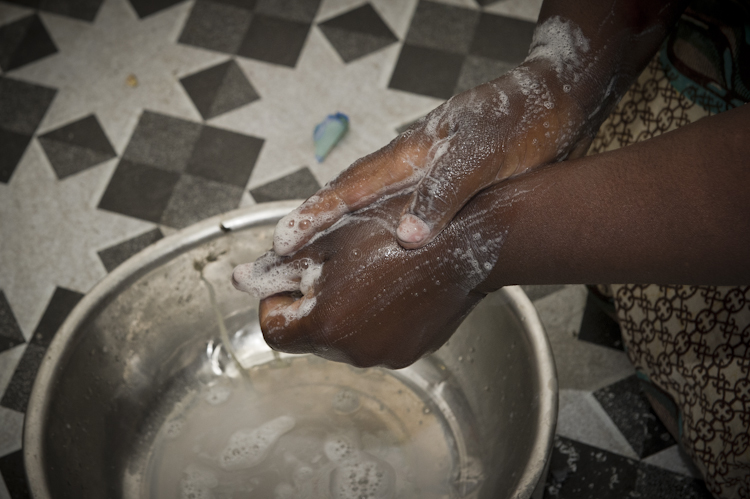Zero-dose children are an indicator of broader inequities
|

A displacement camp in Goma, Democratic Republic of the Congo. Displacement can impact access to routine immunization for children and their families. Credit: PATH/Ley Uwera.
Vaccines are one of the most successful public health interventions to date. Immunizations prevent illness by introducing the body’s immune system to pathogens and thus triggering a response to stop the pathogen from making one sick from viruses or bacteria later in life.
The public health community has made great progress in recent years to establish and strengthen national Expanded Programmes on Immunization (EPIs), an initiative to ensure equitable access to vaccines for every child. The 50th anniversary of the EPI occurs this year, providing an opportunity to celebrate a system that has saved many lives globally. While vaccines work to prevent a large array of diseases and viruses including typhoid, cholera, rotavirus, polio, human papillomavirus infection (HPV), malaria, and many more – delivering these immunizations to communities and individuals in all corners of the world remains a global health challenge.
High-income countries can often afford to establish and maintain supply of doses at prices inaccessible to low- and middle-income countries (LMICs), making Gavi’s vaccine support essential to ensure affordability. As a community, we aspire to vaccine equity: providing equitable and universal access to vaccines, regardless of where people live.
Increasingly, economic crises, conflict, migration, declines in vaccine confidence, displacement, and extreme weather events due to climate change impact access to life-saving vaccines. These factors can exacerbate each other, resulting in millions of children around the world not receiving any immunizations or missing shots in a vaccine schedule, a group often described as “zero-dose children”.
According to the World Health Organization (WHO), the number of zero-dose children was 14.3 million in 2022. While this is an improvement from past years that were strongly impacted by the COVID-19 pandemic, there are still too many children who are lacking protection from vaccines.
Zero-dose children are often part of missed or unprotected communities that are deprived of other basic services. Two-thirds of zero-dose children live in households that have an income under the international poverty line of $1.90 U.S. dollars per day. Nearly 50% of zero-dose children live in three key geographic contexts: urban areas, remote communities, and populations in conflict settings. Children who receive few, if any, routine immunizations are more likely to miss out on other health services, too. These children are often those experiencing the worst impacts of displacement, poverty, conflict, and climate change.
Zero-dose children are therefore an indicator for other existing inequities, such as:
Gender: Gender inequality has been described as a key barrier stopping children from receiving vaccines. Maternal education has been found to be a strong indicator of zero-dose prevalence as high levels of children missing vaccines are born to mothers with no formal education. Limited access to health facilities is also associated with prevalence of children missing immunizations. Further, communities with zero-dose children tend to have out-of-school girls and women who experience high rates of violence, limited agency, and a lack of reproductive, maternal, and neonatal health services. If health systems don’t reach children with immunizations, they may not be working for women and girls, either. By contrast, children of gender-equitable families are more likely to access essential medicines, nutrition, vaccines, hygiene, and education – all factors that benefit child health.
WASH: Safe drinking water, sanitation, and hygiene (WASH) is essential for child health. Communities that lack access to safe water are often in rural areas, hold low levels of knowledge on waterborne diseases, and are most impacted by the effects of climate change. These communities also tend to have under-immunized children, providing an opportunity to integrate increased immunization coverage with improved WASH infrastructure. Vaccines and WASH are both critical components of primary health care that are necessary for comprehensive protection from disease, and work best when used together.
An integrated approach to immunization that includes improved WASH, gender equity, nutrition, education, and more is the most effective way to reduce the burden of diarrhea and other diseases. Building on the success of the EPI and existing vaccine systems, let’s continue to invest in innovative approaches that target zero-dose children. This challenge represents an opportunity to reach communities with multi-sectoral, integrated actions that work together to improve child health beyond immunization alone.












